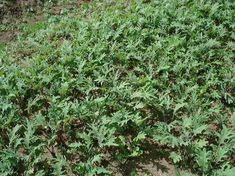
“It was suggested to us by a friend,” says Chris Molyneux. “So we tried it for a season, and it’s just grown and grown from there.”
While traditionally big on the continent, kale has often been little more than cattle feed in the UK. Now, with an expanding ‘foodie’ market, the popularity of kale has turned into profit for Molyneux’s farm.
Like its siblings, this brassica leaf has important health values. It also seems to adapt well to the sea-tempered conditions of his site in Ormskirk, Lancashire. By selective breeding over the past decade, he has developed a strain that grows all year round.
“It has a different texture on the plate, it’s most distinctive quality is its curliness.”
Molyneux grows it as a supplement to his crop of Brussels sprouts. “Traditionally it’s a winter crop. Its growing season is from September to April, after which it starts to shoot and seed. But we’ve bred our own type that won’t shoot if you treat it right.
“It was a mutation we just came across. We kept the seed, and played around with it, until we had a workable new strain.”
The market is constantly expanding. “We sell a lot through small local retailers and through Booths supermarkets. We also have a large market in The Netherlands, where they eat a lot of it, but it’s too cold to grow it throughout the year.
Business is set to boom further after a recent visit from the Sunday Times ‘Foodie At Large’, Tony Turnbull. Molyneux is also a keen cook, and the pair swapped recipes
“He had quite a good recipe, actually. You wilt it quickly in a pan with a bit of olive oil when very soft, then chuck a lid on it. Chop it up with some herbs. Lovely.”



